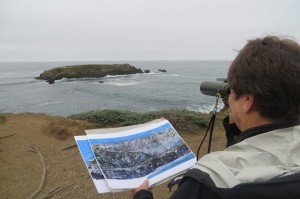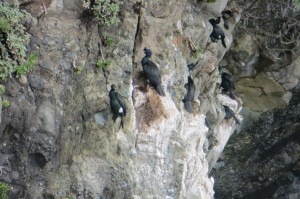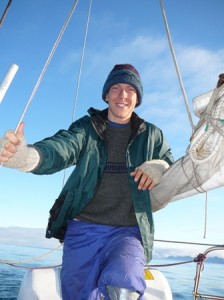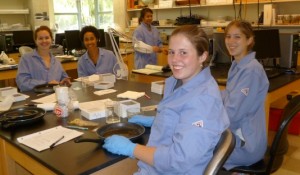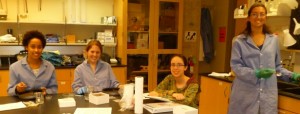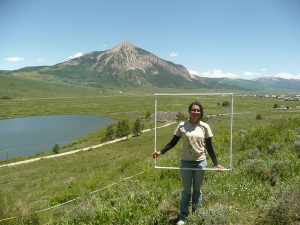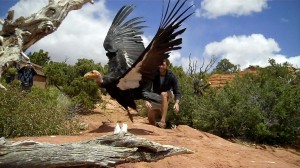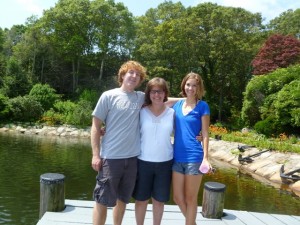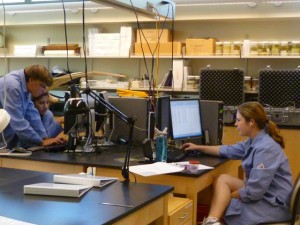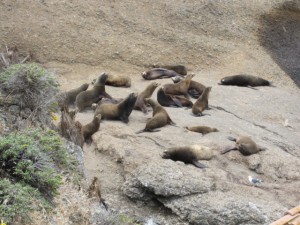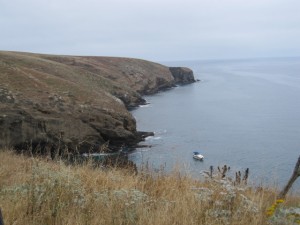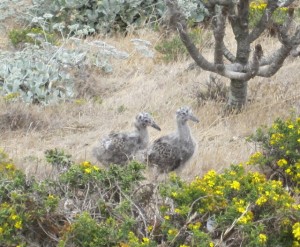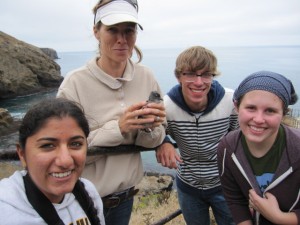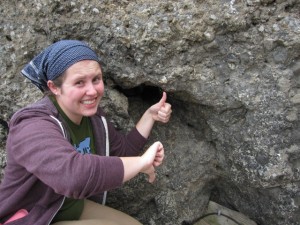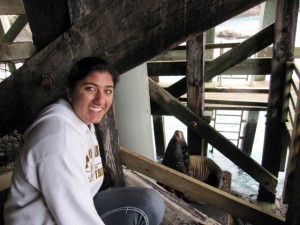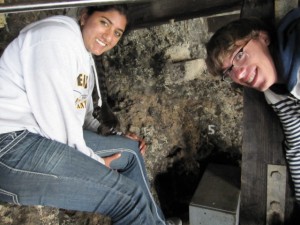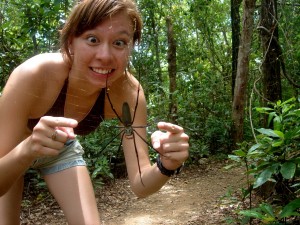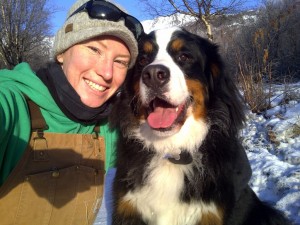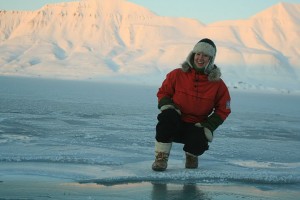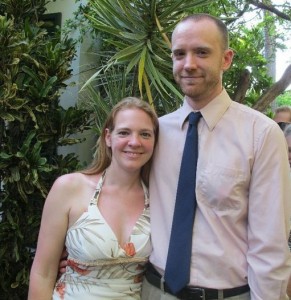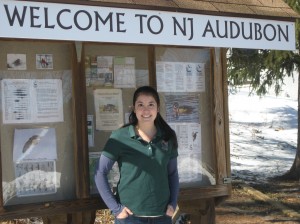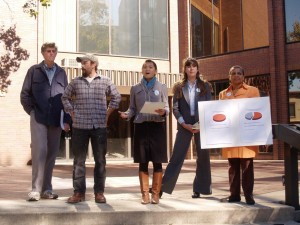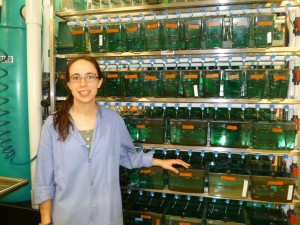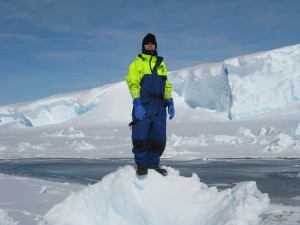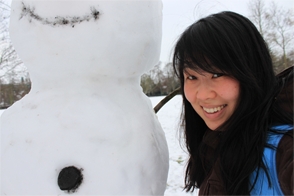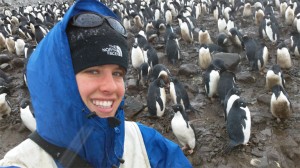Tomorrow Sophie’14 and Ramon’15 will start a study of the seabirds nesting on the offshore rocks in the California Coastal National Monument in Sonoma County. This is part of a collaboration between the Madrone Audubon and the Bureau of Land Management.
Sea Ranch Seabird Study Starts!
Posted by: nina-karnovsky | May 28, 2014 | No Comment |Where are they now? PART V
Posted by: nina-karnovsky | May 28, 2014 | No Comment |Congratulations to Zachary Brown’07 who is now Dr. Brown! He received his doctorate at Stanford and after carrying out research in both the Arctic and Antarctic is heading back to his northern home in Alaska. His journey will take a long time because he is WALKING (over 1000 miles) and KAYAKING (over 1000 miles) from Stanford to the Hobbit Hole. The Hobbit Hole is where Zach and colleagues are working to set up a field station for ecological studies. Read about his journey and the Hobbit Hole here: http://inianislandsinstitute.org/ You can also find them on Facebook Good luck Zach!
Tags: Antartica, Arctic, Hobbit Hole, Spitsbergen, Zach
From the Mudflats to the Mountains!
Posted by: nina-karnovsky | July 22, 2011 | No Comment |This past spring an outstanding group of research students studied the otoliths of Antarctic fish in my lab.
This summer some of these students are taking their talents into the field. Corinne is studying the distribution of juvenile dungenous crab in San Francisco Bay as part of an REU at SF State.
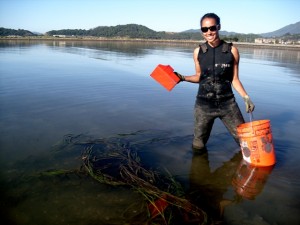
Corinne sampling in the mudflats of SF Bay
Amber is spending her summer in the Rocky Mountains at the Rocky Mountain Biological Laboratory. She is studying the phenology of the dwarf larkspur, Delphinium nuttallianum.
Where are they now? PART IV
Posted by: nina-karnovsky | July 21, 2011 | No Comment |Derek Buchner’08 was part of the 2007 field team that went to the Arctic to study little auks. He has continued to pursue his passion for birds and now works for the peregrine fund with CONDORS!
There is more information about his work on this facebook page:
www.facebook.com/CondorCliffs
Nik Tyack’11 and Eleanor Caves’11 graduated this past spring. Nik wrote his senior thesis on seabirds around Santa Barbara Island and Eleanor wrote hers on the diving behavior of Cassin’s auklets breeding on the Farallon Islands. They have left the west coast islands and are both in Massachusetts for the summer. Eleanor is studying whales at Woods Hole Oceanographic Institute (WHOI) and Nik is studying herring at NOAA.
Tags: Arctic, Cassin's auklet, DerekB, Eleanor, Nik, Santa Barbara Island, Spitsbergen
Vigorous Video Watching
Posted by: nina-karnovsky | June 29, 2011 | No Comment |When you walk by the lab this summer you will see three students in a darkened room hunched towards computer screens. They are intently watching very compelling videos. The star of these movies are the Xantus’s murrelets that nest on Santa Barbara Island. Last summer Channel National Park biologists with the support of the Montrose Settlement Restoration Program installed video cameras in the nests of these rare seabirds. The murrelets dig their nests under vegetation or use exisiting holes. These data will help in the conservation of the species by letting us know more about the nesting behavior of these birds and what predators visit their nests. The students went to Santa Barbara Island to see the nests, cameras and birds. See the previous post to hear about their adventures!
2011 Adventures on Santa Barbara Island by Jamie
Posted by: nina-karnovsky | June 29, 2011 | No Comment |Sea lion heads swivel as our boat powers up to their cliff-side colony. The captain alternates between forward and reverse, edging us closer and closer to the dock structure that clings precariously to the cliff face. A sea lion chorus arises as we clamber one by one up the rusty ladder onto the first level of the dock. Around half the group stays on the boat, prepping the scuba gear for their kelp forest survey, while we ascend a steep concrete staircase behind Kevin, our researcher and island guide.
The researchers here have been working to restore the island to its natural state – before rats, invasive plants, and others were introduced. The island we’re on, by the way, is called Santa Barbara. If you’re not familiar with the Channel Islands, you may not have heard of it. At 640 square acres, it’s the smallest channel island, and also one of the more remote. When we arrived, we’d been on the boat for four hours – and then there’s the two hour drive from Claremont to Ventura, where our boat departed. After our first hour on the boat, we reached Anacapa Island, where we deposited our twenty-some tourists. Then we kicked back with the other researchers for the ensuing three-hour ride. We were entertained variously by stories of their friend Paul Watson, captain of the Sea Shepherd in the popular show Whale Wars, a discussion on which animals are most dangerous to keep around babies (chimpanzees and ferrets, it turns out), and of course, the details of their research on the islands. Before we knew it we’d reached Santa Barbara, where we’d have just an hour before we’d have to board the boat again for the long trip home.
After we make it up the cliff, Kevin shows us around the researchers’ home base – a small house overlooking the landing cove.
Our first stop is the screen room, where live video data from several nesting sites can be seen. This is where we come into the picture. For the past two years, Kevin has been recording the entire breeding season of Xantus’s Murrelet (Synthliboramphus hypoleucus) at about eight nest sites on this side of the island. Of course, no one person could analyze such a vast quantity of data – the season runs from February to June – but the three of us have been slowly chipping away at it for the past three weeks. Xantus’s Murrelet is listed as threatened by the IUCN because its entire population nests on a few small islands off the coast of southern California and northern Mexico. Twenty percent of the population nests on Santa Barbara Island. Heavy shipping traffic in and out of Los Angeles means there is always the threat of an oil spill, which would devastate the species. We’re analyzing these videos because almost nothing is known about their nesting habits, and if any sort of disaster were to befall the islands, the knowledge we’re collecting could make a big difference in rehabilitation efforts for this species.
Back in the screen room, Kevin is disappointed to find that the computer is in the process of backing up the most recent recordings to an external hard drive, meaning we won’t be able to see the videos while we’re here. He records over 30 gigabytes of video every day, he explains, so it takes several hours to transfer. Having watched videos all day every weekday for the past three weeks, we aren’t terribly disappointed.
He then leads us around the house to the nearest nest site, which is under a scrubby bush just a few feet from the edge of the deck. We take turns crouching down, pressing our faces as low and far into the bush as we can. And there, far in the back, we can see a murrelet’s head poking up out of a little depression. It’s not much of a view, but having only seen them on computer screens, we’re all thrilled with our first three-dimensional sighting. The tour continues and we see several other nest sites. As we move down a steep slope, we pass through an area where gulls are nesting. Their chicks are large, but still flightless, and they eye us suspiciously, looking like tiny, fearful dodo birds. “If you accidentally flush any chicks out of their nests, just grab them and put them back in,” Kevin advises us, “otherwise the other gulls can eat them.” He also points out that should we be dive-bombed, to hold our hands above our heads, “because they always aim for the highest point.” This duly noted, we glance skyward hesitantly before proceeding.
Once we’ve made it back down to the path, Kevin asks us if we want to see them band an auklet chick, to which the answer is a pretty obvious yes. He and another researcher, Sasha, hop the railing and walk over to the little wooden structures that Kevin pointed out earlier. After a brief chase, they capture the chick and bring it back over to the path. It’s the first auklet chick ever banded on Santa Barbara, so everyone’s very excited. We all huddle around the chick and Sarah – the researcher who’s doing the banding. It takes a little while, but eventually we hear the band snap shut. After we pose for pictures, Kevin and Sasha take the bird back over to its nest, and our journey continues.
For our last and most exciting adventure, we head back down to the dock area, where the nest sites we’ve been watching are located. We see Molly’s nest first, because it’s higher up and more accessible. She’s surprised to find that her nest is actually pretty high off the ground, meaning that the very punctual mouse that runs in and out of her nest nearly every day at the same time has been doing quite a bit of rock climbing. Reaching the nest Neha and I have been watching is a little more difficult. The pilings supporting the dock structure form a nearly impenetrable barrier between us and our nest. Kevin points to a horizontal piece of wood and directs Neha: Put your foot there, hold the vertical piling in both hands, swing around and step down on the other side. As soon as she moves toward the piling, the bull sea lion sitting at its base swings his head around and begins to bark at us. Neha steps up, and begins to swing around – Kevin is still holding onto her at this point – when the sea lion roars – actually roars, like a lion – and lunges toward her. Kevin yanks her back down and the sea lion goes back to barking and looking very, very angry. We consider our options. Kevin points at a small hole near the top of the wall and suggests we try climb through. He goes first, followed by Neha and then me, each of us going through feet-first, holding ourselves up with our arms while we search blindly for purchase. Kevin coaches us from the other side, and we make it through. Molly stays behind so that when we don’t return, she can point out to the rescuers exactly which sea lion did us in.
It’s pretty invigorating to finally see our nest in person, though we are still a little energized from our recent sea lion encounter. At first it looks unfamiliar, but then we start to recognize things. “Oh, that’s that rock!” and “So there is another entrance here, that’s where they’ve been going!” We don’t have much time, so we just admire it briefly, then walk back to the barrier. The sea lion has moved away, so we follow the more traditional route this time. He looks up from his lounging, but no longer seems interested, and we get by without incident.
We wait on the top level of the dock structure for the boat to return. The fog is just beginning to burn off for the day, and we watch from above as the sea lions bask amid kelp fronds in the sparkling blue water. Soon enough we hear the thump thump thump of the boat rounding the corner, and we make our way back down to the ladder, where we’ll clamber back aboard, sprawl out on the padded benches, and nap until the tourists come back on board. It’ll be a long trip, but well worth it.
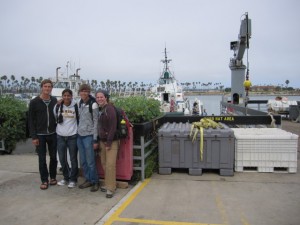
Once we got back to Ventura, we took a group photo with Kevin before saying goodbye, and heading back home to watch some more murrelet video!
Where are they now? PART III
Posted by: nina-karnovsky | June 8, 2011 | No Comment |
Laurel McFadden’06 studied little auks in the Arctic in 2005 and 2008. She has rarely been below the Arctic circle since! She spent a year on a Watson grant in Greenland, and the Norwegian, Russian and Canadian Arctic before moving to Alaska. She is currently getting her Master’s of Science degree at Universtiy of Alaska.
Allison Bailey’07 conducted research on little auks in 2006. After graduation she went back to the Norwegian Arctic on a Fulbright grant studying Arctic flora. She then went on to get a Master’s of Science degree at University Center of Svalbard where she studied the winter behavior of zooplankton in Arctic fjords. Allison is currently studying birds in the Sierras where she must be right at home because it is cold and snowy there!
Christine Cass’05 and Colin Fiske’05 studied grunion and woodrats during the summer of 2005. Christine just finished her doctorate at University of South Florida and next month they will both move back to California where Christine will be a professor in the Oceanography Department at Humbolt State University.
Where are they now? PART II
Posted by: nina-karnovsky | April 5, 2011 | No Comment |Nell Baldwin graduated in May, 2010 and did a thesis in which she experimentally investigated the potential of pigs being fed on pasture land (versus given grain feed). Nell worked in the Arctic on the little auk study in 2007 and the Channel Island surveys in 2010! Nell has been working for GreenCorps running campaigns to protect food and water. She has some shocking stories; did you know that arsenic is often put in chicken feed?!
Julia Gleichman graduated last year and did her senior thesis on both the Arctic little auks and tropical wedge-tailed shearwaters! She worked on the Arctic little auk research project in 2008. Julia won the biology department senior prize and she is now at Pomona College conducting neuroscience research on zebrafish.
Zachary Brown graduated in 2007. He did his senior thesis on using stable isotope chemistry of grunion otoliths to assess migration patterns. Zach worked on the Arctic little auk project the summer after he graduated and is now a graduate student at Stanford University. Zach has been collecting data for his doctorate in both the Arctic and Antarctic!
WHERE ARE THEY NOW?
Posted by: nina-karnovsky | January 31, 2011 | No Comment |People who follow this blog often ask me about the where the student members of the lab go after graduation. Here is an update on some of last year’s (2010) graduates:
Charlotte who worked on the Prairie project and was also my senior thesis student is at Cambridge University working on a Master’s degree. She is experiencing a very cold winter there!
Kristen who worked on the Channel Islands project is currently experiencing a very cold summer in Antarctica where she is studying penguins.
Augie who also worked on the Channel Islands project is now on Fulbright Fellowship in Poland and will be heading north to the Arctic for a chilly summer!

